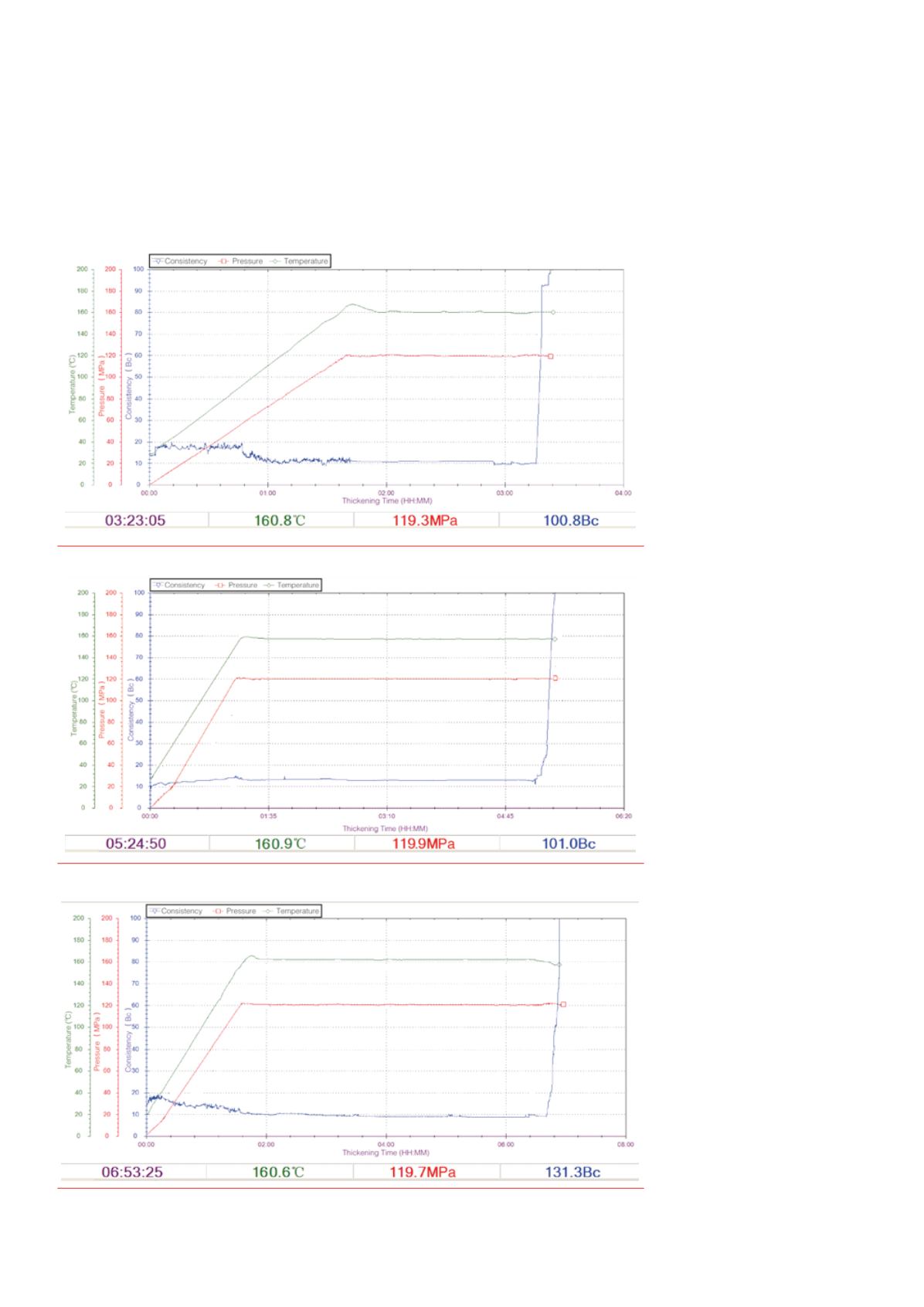
66 |
OilfieldTechnology
February
2014
additives and auxiliary agentsmust nowhave the following
features:
Ì
Ì
A high temperature resistance to at least 412˚F.
Ì
Ì
Suitability for awide range of temperature differences of
230˚F ormore because one stage lone zone cementingwill
be required for somewells.
Ì
Ì
High salt resistance.
Ì
Ì
Suitability for cementing jobswith very high Sp.Gr. slurry
(Sp.Gr. = 2.8) or very low Sp.Gr. slurry (Sp.Gr. = 1.1).
Ì
Ì
Suitability for high pressure gaswells (maximum bottom
hole static pressure is 17 600 psi), then great bonding
capability and anti‑gas channelling is required.
Ì
Ì
Simple formulation and no pumping issues.
Anewseriesofadditives
Over thepast few years of research, evaluation and through
servicinghundreds of wells inCNPC’s TarimBasin inChina,
Landy Energy Services, Inc. has developed a series of cementing
additives called Intelligent Temperature AdaptableCementing
Additives (ITACA).
These canbe used for
cementing conventional wells,
and they can alsobe added into
cement slurry for super deep
andHPHTwells.
The series includes:
Ì
Ì
GT‑10 fluid loss additive
(GT‑10L is in liquid form,
GT‑10S is in solid form).
Ì
Ì
GT‑20L retarders (in liquid
form).
Ì
Ì
GT‑30 drag reducing agent
(GT‑30L is in liquid form,
GT‑30S is in solid form).
Ì
Ì
GT‑66L defoamer (in liquid
form, whichwasmodified
fromGT‑60L defoamer).
Ì
Ì
GT‑70S stabiliser (in solid
form).
Ì
Ì
GT‑600Sweighting agent (in
solid form, Sp.Gr. =
6.8 ~ 7.4).
Ì
Ì
The above additives are all
resistant to 464˚F.
Also, the following
auxiliary additives havebeen
developed:
Ì
Ì
GT‑50S anti‑gas channeling
agent (in solid form,
resistant to 392˚F).
Ì
Ì
GT‑116Lwashing‑out and
isolating agent (in liquid
form, suitable for both
water and diesel‑basedmud
displacement).
Ì
Ì
GT‑160S alleviating agent
(in solid form, Sp.Gr. = 0.58
~ 0.62, pressure rating =
10 000 psi).
Ì
Ì
GT‑HW‑2 non‑conductive
weighting agent (in solid,
Sp.Gr. = 5.2 ~ 5.8).
Intelligentadditives
For the ITACA series, hydration
is achievedmainly through
macro‑molecules beingdirectly
adsorped in theGT‑10L(S)
fluid loss agent and theGT‑20L
retarders, and is also controlled
by the concentrationof the
retardingmolecules in the
cement slurry.
Figure1.
ThickeningcurveAat160˚C(320˚F).
Figure2.
ThickeningcurveBat160˚C(320˚F).
Figure3.
ThickeningcurveCat160˚C(320˚F).


